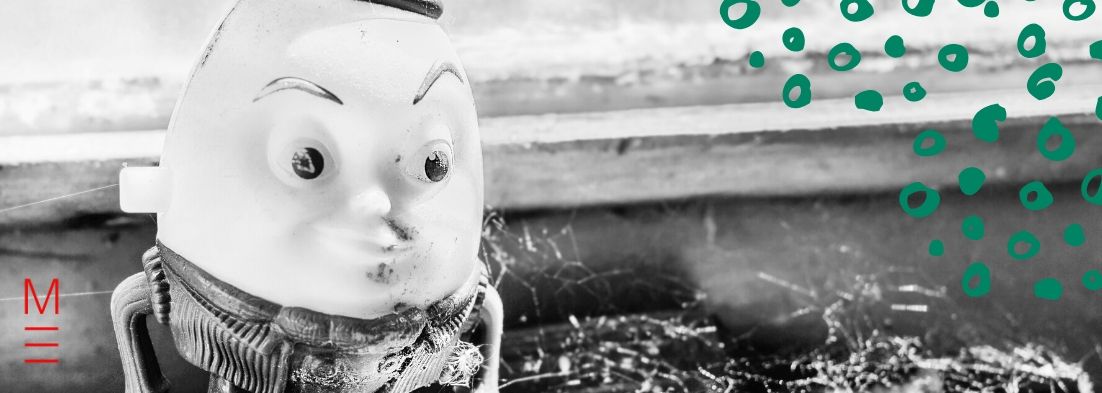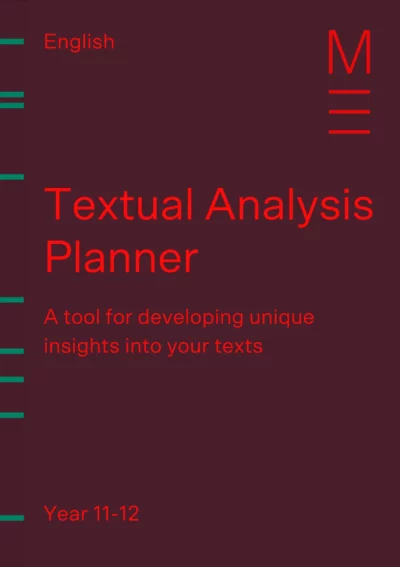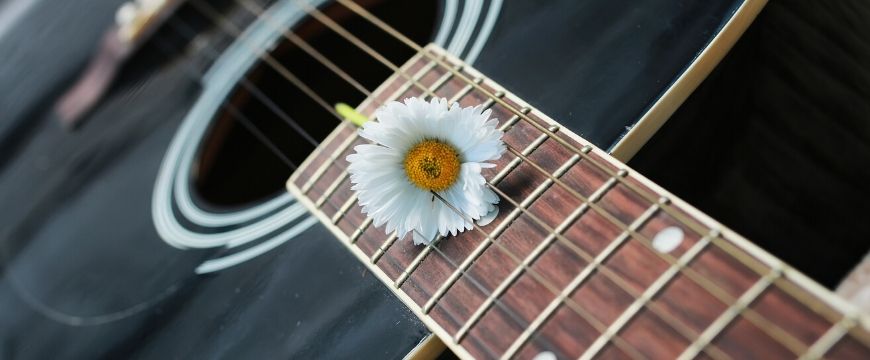Welcome to Matrix Education
To ensure we are showing you the most relevant content, please select your location below.
Select a year to see courses
Learn online or on-campus during the term or school holidays
Learn online or on-campus during the term or school holidays
Learn online or on-campus during the term or school holidays
Learn online or on-campus during the term or school holidays
Learn online or on-campus during the term or school holidays
Learn online or on-campus during the term or school holidays
Learn online or on-campus during the term or school holidays
Get HSC Trial exam ready in just a week
Get HSC exam ready in just a week
Select a year to see available courses
Science guides to help you get ahead
Science guides to help you get ahead

Not sure how to analyse rhyme in your poems? Well, don’t fear, we’re going to show you how to analyse rhyme effectively and clearly!
This article will explain the definition of rhyme, introduce you to different types of rhymes and rhyme schemes and show you how to analyse rhyme step-by-step with a provided example so you never have to stress over poetry again.
Want to know the key to sophisticated analysis?

Level up how you analyse texts and take notes with expert strategies and templates!

Fill out your details below to get this resource emailed to you.
"*" indicates required fields
Rhyme refers to the same last sound made at the end of words. This doesn’t mean they need to share the same spelling.
For example, and ‘arc’ and bark’ rhyme with each other, but they are spelt differently.
In poetry, rhyme schemes refer to the pattern of rhyming words at the end of each line. We represent these patterns by allocating a letter to represent rhyming lines.
Note: Read the poem aloud to identify rhyming words easier!
To get a basic sense of rhyme, let’s take a look at Robert Frost’s, Two Roads Diverged In the Yellow Woods.
To determine the rhyme scheme of this stanza, we must examine the last word of each line:
Now, we must allocate letters to the lines so others can understand how we’ve identified the rhyme schema of the poem (the convention is to use ascending letters from the alphabet (a,b,c,d,etc.):
Therefore, the rhyme scheme is: ABAAB
Get ahead of your English studies now! With advanced completion of content before its taught at school, you’ll be better prepared for your assessments. Learn more about Matrix English Courses now.
Produce insightful analysis & Band 6 essays!
Expert teachers. Band 6 resources. Proven results. Boost your English marks with our On Campus course.
When people think about rhyme, they usually think about the ‘perfect rhyme‘. However, imperfect rhymes, also known as slant rhymes also exists.
So, let’s get into this in detail and see their differences.
Perfect rhyme refers to words where the stressed syllable and the following sounds must rhyme with each other.
Remember from our Metre article, a stressed syllable is a sound that is emphasised in a word.
For example:
Therefore, words like cat and bat, or crying and trying are perfect rhymes because the stressed syllables AND the following syllables all rhyme.
Words like BOX-er and FIGHT-er are not considered a perfect rhyme because the stressed syllables don’t rhyme.
An imperfect rhyme refers to words that nearly rhymes. These are words that have some rhyming syllables or rhyming vowels (also known as assonance).
Here are some examples of imperfect rhymes:
In poetry, imperfect rhymes are still considered as rhymes.
So, remember this when you learn how to analyse rhyme; imperfect rhymes are still given the same letter to represent them in a rhyme scheme.
For example, braid and train = A, and crying and boring = B
Internal rhymes occur when there are rhyming words within a line (not at the end or beginning).
They can occur:
Using internal rhyme unifies the poem and adds another musical element.
There are many types of rhyme schemes. Certain poems are only written in a particular rhyme scheme.
So, let’s see what some of the common rhyme schemes are:
Now, let’s see what the conventional rhyme scheme for different types of poems are:

It is important to note that while some poetic forms usually have a conventional rhyme scheme poets do not always adhere to this and develop their own. For example, Shakespeare deviated from Petrarch’s traditional form to suit the English language (which naturally doesn’t rhyme as much) and Spenser later built on Shakespeare’s rhyme schemes for more interwoven sonnets.
Poetry is like music. It is written to be spoken aloud. As such, many of its features rely on techniques that create certain sounds and rhythms.
Rhyme creates an echo in the poem, which can leave a lasting effect on the audience.
A poet can use rhyme in their work to evoke emotions from their audience. Rhyme tends to be predictable but pleasurable.
As such, it can create suspense or dramatic tension.
Also, if a poet chooses to break from a rhyming scheme, this can create a sense of uneasiness.
Now that you know the different type of rhyming schemes and how rhyme works, let’s learn how to analyse rhyme!
Remember, keep practising how to analyse rhyme in different types of poetry to get the hang of it. It gets easier every time!
Remember, poetry heavily relies on musical elements to create a particular mood and atmosphere. That’s why it’s crucial that you read your poem aloud.
You are able to pick up on subtle rhymes and rhythmic cues and it helps you better understand the poem.
So, read your poem out loud and get a feel of the rhyme and rhythm!
Did you notice some rhymes in your reading? Well, get out your pens or highlighters and let’s annotate your findings!
1. Highlight any words that rhyme with each other.
You need to read the poem aloud again. However, this time, focus on identifying rhyming words.
Most of the time, poets will choose to place rhyming words in the same stanza. However, they can also scatter the rhymes across the poem, so it is more difficult to identify!
So, pay particular attention to the sounds made in the whole poem, especially the last words in each line.
Also, don’t neglect any rhymes you might find in the beginning, or middle of the lines. Highlight them all!
They may be important in figuring out the significance of the rhyme scheme.
2. Scan through the poem
Scan through the poem and make sure you didn’t overlook any rhyming words.
If you want to save time, simply scan through the last words of each line.
3. Give a letter for the rhymes
Now, it’s time to group the same rhymes! Get out a pen and give each set of rhyming words a letter.
Start from A and slowly move down the alphabet!
Doing this will make the next steps of learning how to analyse rhyme much easier.
Poets choose particular rhyme schemes to impact the audience in different ways. It creates a particular atmosphere and mood, and it can shape the way we respond to the themes in the poem.
Rhyme can create a fun atmosphere, a chant-like feel, sense of rigidity or even have sarcastic undertones.
Just keep your ears and mind open when you are reading the poem. Pay attention to your feelings.
Here are some questions you should ask yourself to further break down the effect of rhyme:
After you’ve done this, collate all your findings!
The significance of a technique refers to the meaning it gives to the reader.
This means that you need to have a strong understanding of what the poem is about.
Based on your findings from the previous step, answer the following questions:
Now, collate these findings with your findings from Step 3 to analyse rhyme. Take a look at our example in the next section to see how to do this.
Now, we have all the necessary ingredients to put together a T.E.E.L paragraph.
T.E.E.L stands for:
You can find a more detailed explanation of using T.E.E.L in our post on paragraph structure (this post is part of our series on Essay Writing and shows you the methods Matrix English Students learn to write Band 6 essays in the Matrix Holiday and Term courses).
Let’s apply our knowledge about how to analyse rhyme with an example from Sylvia Plath: Daddy.
Note: If you need a reminder on how to read a poem to find meaning, take a look at our Beginner’s Guide to Poetry: Overview.
You do not do, you do not do
Any more, black shoe
In which I have lived like a foot
For thirty years, poor and white,
Barely daring to breathe or Achoo.
Daddy, I have had to kill you.
You died before I had time——
Marble-heavy, a bag full of God,
Ghastly statue with one gray toe
Big as a Frisco seal
And a head in the freakish Atlantic
Where it pours bean green over blue
In the waters off beautiful Nauset.
I used to pray to recover you.
Ach, du.
In the German tongue, in the Polish town
Scraped flat by the roller
Of wars, wars, wars.
But the name of the town is common.
My Polack friend
Says there are a dozen or two.
So I never could tell where you
Put your foot, your root,
I never could talk to you.
The tongue stuck in my jaw.
It stuck in a barb wire snare.
Ich, ich, ich, ich,
I could hardly speak.
I thought every German was you.
And the language obscene
An engine, an engine
Chuffing me off like a Jew.
A Jew to Dachau, Auschwitz, Belsen.
I began to talk like a Jew.
I think I may well be a Jew.
The snows of the Tyrol, the clear beer of Vienna
Are not very pure or true.
With my gipsy ancestress and my weird luck
And my Taroc pack and my Taroc pack
I may be a bit of a Jew.
I have always been scared of you,
With your Luftwaffe, your gobbledygoo.
And your neat mustache
And your Aryan eye, bright blue.
Panzer-man, panzer-man, O You——
Not God but a swastika
So black no sky could squeak through.
Every woman adores a Fascist,
The boot in the face, the brute
Brute heart of a brute like you.
You stand at the blackboard, daddy,
In the picture I have of you,
A cleft in your chin instead of your foot
But no less a devil for that, no not
Any less the black man who
Bit my pretty red heart in two.
I was ten when they buried you.
At twenty I tried to die
And get back, back, back to you.
I thought even the bones would do.
But they pulled me out of the sack,
And they stuck me together with glue.
And then I knew what to do.
I made a model of you,
A man in black with a Meinkampf look
And a love of the rack and the screw.
And I said I do, I do.
So daddy, I’m finally through.
The black telephone’s off at the root,
The voices just can’t worm through.
If I’ve killed one man, I’ve killed two——
The vampire who said he was you
And drank my blood for a year,
Seven years, if you want to know.
Daddy, you can lie back now.
There’s a stake in your fat black heart
And the villagers never liked you.
They are dancing and stamping on you.
They always knew it was you.
Daddy, daddy, you bastard, I’m through.
You should also take the time to listen to Sylvia Plath reading Daddy. This is quite interesting as you can hear her emphasise particular words and subjects.
Reading Daddy out loud is a unique experience; it is quite harsh and feels almost suffocating.
There is no consistent rhyme scheme. Every stanza is different from the previous, which makes it difficult to predict.
You also immediately notice the Plath’s overuse of rhyme, especially with the ‘oo’ sound.
This makes her poem feel very confronting and haunting.
We will only be annotating the first 2 stanzas of Daddy in this example.
However, you should always annotate the whole poem to effectively analyse how rhyme is used throughout the poem.
You do not do, you do not do
Any more, black shoe
In which I have lived like a foot
For thirty years, poor and white,
Barely daring to breathe or Achoo.
Daddy, I have had to kill you.
You died before I had time——
Marble-heavy, a bag full of God,
Ghastly statue with one gray toe
Big as a Frisco seal
Findings:
Now that we know Plath’s rhyming patterns, let’s figure out the effect by answering the following questions.
1. Does the rhyme scheme change throughout the poem? Why?
Every stanza of the poem follows a different rhyme scheme; there is no inconsistent rhyme scheme throughout the poem.
Some stanzas are heavy with end-rhymes, and others barely have any.
Rhymes unifies the whole poem. So, stanzas with no rhyme schemes break the structure of the poem and create a sense unpredictability. This can get quite irritating as there is no flow.
2. Does it feel forced or natural? Why?
The rhyming words and rhyme schemes feel forced.
Plath overuses the sound “oo” throughout the poem. This creates a ‘thick’ and suffocating atmosphere, which complements the themes in the poem: oppression, anger and death.
3. What mood does it create?
The poem has a lyrical feel that mirrors nursery-rhymes. However, instead of being playful and innocent, the poem feels more haunting and unsettling.
4. Does it help create a rhythm?
The rhyming words (‘oo’ sound) still creates a sense of rhythm, despite it being used at irregular intervals.
This is because the rhyme is consistently used throughout the poem. The sound is instantly recognisable; acting as an irregular metronome for the poem.
Also, the consistent ‘oo’ sound throughout the poem resembles the rhythmic sound of a steam train: “choo choo, choo choo”.
Now that we figured out the effect of rhyme, it is time to find meaning!
1. Does it emphasise a particular subject? Think about the poem’s themes.
Daddy is a one-sided conversational poem where Plath explains her feelings and thoughts about her toxic relationship with her father.
Some of the main themes explored in this poem are:
Now, let’s refresh our memory about our findings about rhyme from the previous step:
So, let’s link Plath’s themes to our findings:
2. What is the poet’s intention?
The rhyme scheme gives insight into Plath’s emotions and thoughts. It directly complements the themes and subjects explored in the poem and gives us a chance to feel what Plath’s feeling.
This is much more evocative and confronting.
Now, it is time to collate all your findings into a TEEL paragraph.
Plath explores the toxicity and detriments of oppressive power in Daddy. The overused rhymes of ‘oo’ sound throughout the poem, like “You”, “Jew” and “Achoo”, creates a thick and suffocating atmosphere that is symbolic of the suffocation that victims of oppressive power feel. Plath confronts her ‘daddy’ and husband in this poem and criticises them for oppressing her. As such, the irregular rhyme scheme represents her spikes of anger and resentment towards these oppressive men. Some stanzas have up to four out of five rhyming lines (final words in each line of stanza 1: ‘do’, ‘shoe’, ‘foot’ ‘white’, and ‘achoo’), whereas other stanzas only have one line that rhymes with the previous stanza (final words in each line of stanza 2: ‘you’, ‘time’, ‘god’, ‘toe’, and ‘seal’). Since the ‘oo’ sound is so confronting, the stanzas with a rhyme scheme feels much more evocative and suffocating, thus representing her heightened feelings. As such, Plath confronts her audience with the reality of oppression and it’s impacts on victims. |
© Matrix Education and www.matrix.edu.au, 2025. Unauthorised use and/or duplication of this material without express and written permission from this site’s author and/or owner is strictly prohibited. Excerpts and links may be used, provided that full and clear credit is given to Matrix Education and www.matrix.edu.au with appropriate and specific direction to the original content.